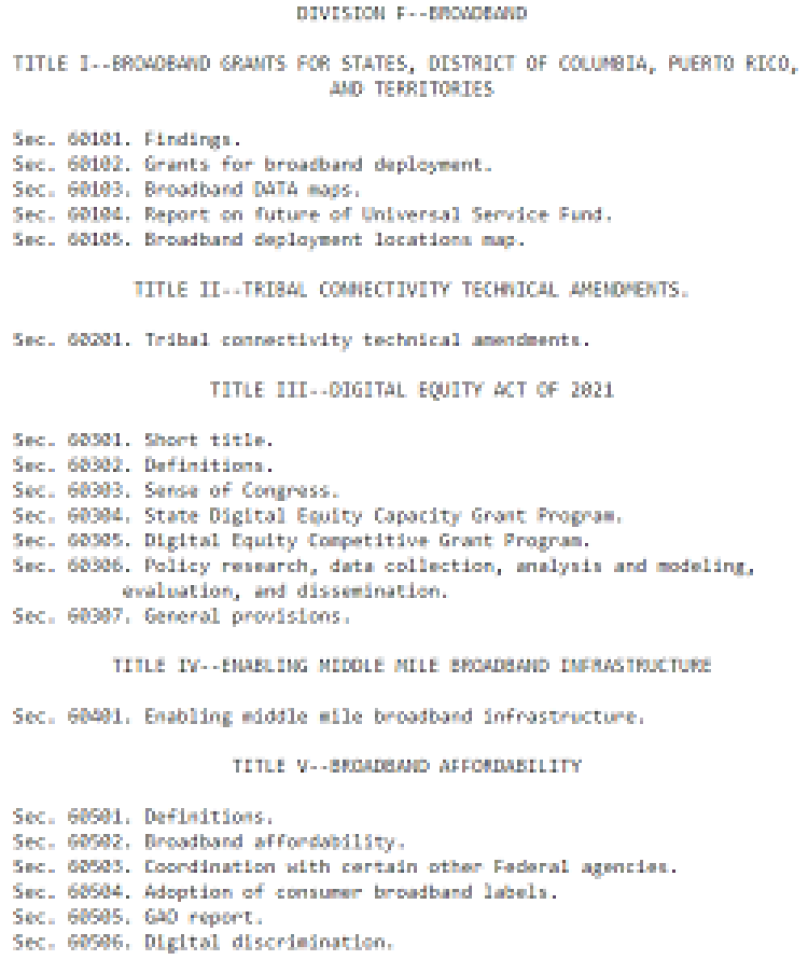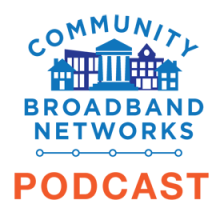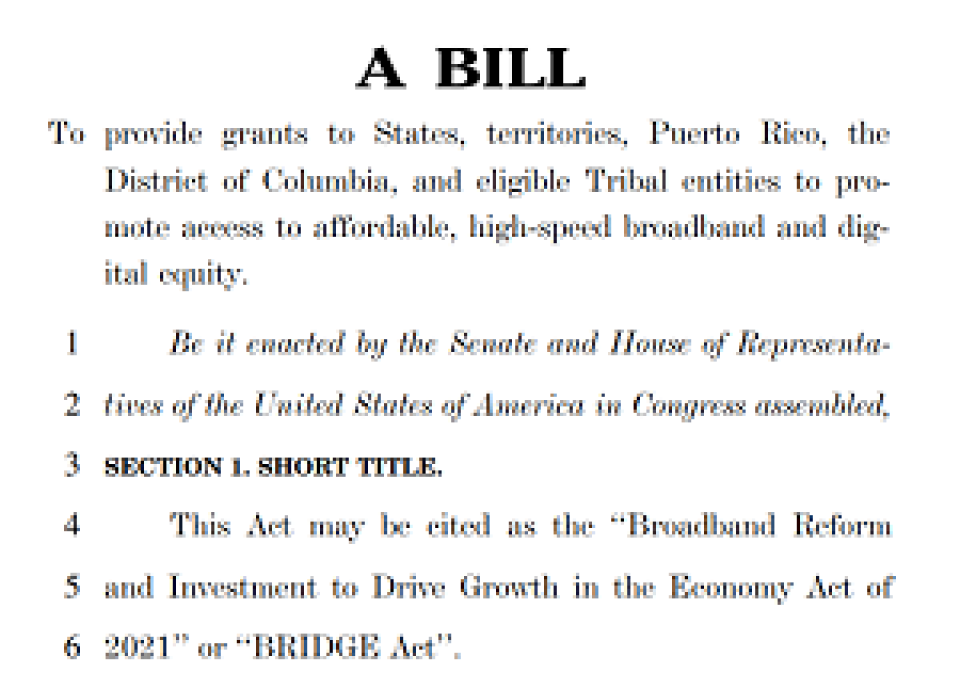
Fast, affordable Internet access for all.

Even as high-speed Internet access is widely considered a basic utility akin to electricity and clean water, there are still 17 states with preemption laws that either ban publicly-owned broadband networks or have barriers that make it all but impossible for municipalities to compete with monopoly Internet Service Providers. This, despite the major incumbents having received billions in taxpayer subsidies over the years and having failed to deliver universally reliable and affordable connectivity.
However, as it has become increasingly clear that the private market alone is not going to solve America’s connectivity crisis, last year two states (Arkansas and Washington) rolled back their preemption laws that were protecting monopoly incumbent providers from competition, allowing local and regional governmental entities to build the telecommunications infrastructure their residents need.
Now, one Nebraska lawmaker has recently filed a bill that, if passed, would significantly remove his state’s current barriers to municipal broadband. Nebraska State Sen. Justin Wayne of Omaha filed LB916 last week with the state legislature’s Transportation and Telecommunications Committee.
As it stands now, according to the Coalition for Local Internet Choice (CLIC), Nebraska “generally prohibits agencies or political subdivisions of the state, other than public power utilities, from providing wholesale or retail broadband, Internet, telecommunications or cable service. Public power utilities are permanently prohibited from providing such services on a retail basis, and they can sell or lease dark fiber on a wholesale basis only under severely limited conditions. For example, a public power utility cannot sell or lease dark fiber at rates lower than the rates incumbents are charging in the market in question.”
Bill to Let Local Communities Decide on Broadband
This past Friday Congress finally passed the bipartisan Infrastructure Investment and Jobs Act. The legislation includes $65 billion to boost high-speed Internet connectivity – “the largest (federal) investment in broadband deployment ever,” as noted by Benton Institute for Broadband & Society. This is an historic piece of legislation that includes many of the things we wanted to see in it and we believe it will significantly help solve broadband challenges for many who have not yet been well connected.
There are two major buckets of broadband money that will be made available to states and tribal governments: $42.5 billion for the deployment of infrastructure, which will be mostly aimed at rural communities, with the rest going toward digital inclusion efforts.
While we have not yet gone through the final version with a fine-toothed comb, the broadband portion of the infrastructure bill appears to be identical to what was in the bipartisan Senate version of the bill, which we previously wrote about here.

Rural America Biggest Beneficiary
The $42.5 billion portion of the bill will be allocated to the States in the form of block grants under the Broadband Equity, Access, and Deployment (BEAD) Program, which will be administered by the U.S. Department of Commerce's National Telecommunications and Information Administration (NTIA).
With American Rescue Plan funds flowing into state government coffers, about a third of the nation’s 50 states have announced what portion of their Rescue Plan dollars are being devoted to expanding access to high-speed Internet connectivity.
The federal legislation included $350 billion for states to spend on water, sewer, and broadband infrastructure, though everything we have seen suggests that the vast majority of that will not go to broadband. There is also another $10 billion pot of rescue plan funds, called the Capital Projects Fund, that mostly must be used to expand access to broadband.
Laboratories of Broadband-ification
As expected, each state is taking their own approach. California is making a gigantic investment in middle-mile infrastructure and support for local Internet solutions while Maryland is making one of the biggest investments in municipal broadband of any other state in the nation. And although Colorado does not prioritize community-driven initiatives, state lawmakers there have earmarked $20 million for Colorado’s two federally-recognized Indian tribes to deploy broadband infrastructure with another $15 million devoted to boosting telehealth services in the state.
Undoubtedly, individual states’ funding priorities vary. Some states may be relying on previously allocated federal investments to boost broadband initiatives and/or have been persuaded the private sector alone will suffice in solving its connectivity challenges. And in some states, such as Illinois, Minnesota, and Maine, lawmakers have prioritized using state funds to support broadband expansion efforts while other states may be waiting on the infrastructure bill now making its way through Congress before making major broadband funding decisions.
As of this writing, 17 states have earmarked a portion of their Rescue Plan money (totaling about $7.6 billion) to address the digital divide within their borders. Those states are Arizona, Arkansas, California, Colorado, Delaware, Hawaii, Indiana, Kentucky, Maine, Maryland, Montana, Missouri, Virginia, Tennessee, Vermont, Washington, and Wisconsin.

On this week’s episode of the Community Broadband Bits Podcast, host Christopher Mitchell is joined by Angela Bennink (Telecommunications Director for Kitsap Public Utility District) and Laura Loe (Executive Director of Share The Cities Community Education & Share The Cities Action Fund) from Washington state.
The group discusses the struggles Public Utility Districts (PUDs) have experienced over the last 20 years as a result of the state’s legislative restrictions. In 2000, the state legislature passed a law restricting PUDs from offering retail telecommunications services, despite the fact that they are a natural path toward getting fiber infrastructure to all Washingtonians.
They recount the tumultuous road to repealing the restrictions and how PUDs and other community networks are working toward providing better competition and Internet access to the region.
This show is 42 minutes long and can be played on this page or via Apple Podcasts or the tool of your choice using this feed.
Transcript below.
We want your feedback and suggestions for the show-please e-mail us or leave a comment below.
Listen to other episodes here or view all episodes in our index. See other podcasts from the Institute for Local Self-Reliance here.
Thanks to Arne Huseby for the music. The song is Warm Duck Shuffle and is licensed under a Creative Commons Attribution (3.0) license.
Fiber-to-the-home service is on its way to three counties in Southeast Georgia. In July, the Midway-based Coastal Electric Cooperative and Darien Communications – a family owned telephone, cable TV, and Internet Service Provider – announced they were teaming up to build a $40 million fiber network. Once the initial network is up and running, 16,000 homes and businesses in the counties of Bryan, Liberty, and Long will have access to high-speed Internet service.
The partnership has given birth to a new co-op entity with Coastal Electric known as Coastal Fiber Inc., which will lease the infrastructure and begin offering retail broadband service as early as January 2022. Construction began this summer with phase one of the project slated to be rolled out over the next four years.
The new partnership will first target 9,800 homes in Bryan County, 6,200 in Liberty County, and 500 in Long County.
Phase 1 Focuses on Underserved County Residents
“The first phase goal is for customers in Liberty County to begin seeing availability in January 2022. The system will be built out in phases from that point with the total buildout by 2030. The service to Bryan and Long counties will be as we build out in phases. No dates for Bryan and Long have been determined yet,” Coastal Electric Communication Coordinator Bethany Akridge told the Savannah Morning News.
“The service in Bryan County, for example, depends on where you live. There is broadband available in the more populated areas because it is more profitable for companies,” Akridge said. “The reason the cooperative is involved is because there is a need, so we are stepping in to fill that need where those areas are not served or underserved.
Update, 1/22/22: Common Sense Media has released an easy-to-read, comprehensive guide to federal broadband funding opportunities. Read it here.
In response to the Covid-19 pandemic, Congress and the Biden Administration passed two federal stimulus relief packages with historic levels of funding for programs devoted to advancing digital equity – the American Rescue Plan Act (ARPA) and the Consolidated Appropriations Act (CAA).
In early August, legislators in the U.S. Senate passed the Infrastructure Investment and Jobs Act, a $1.2 trillion infrastructure package which continues many of the federal programs started by previous relief packages and includes $65 billion more for expanding high-speed Internet infrastructure and connectivity. Members of Congress returned from their summer break on September 20th and U.S. House Representatives are expected to vote on the infrastructure relief bill, which enjoys bipartisan support, on September 30th.
This guide consolidates the different funding opportunities made available through various relief packages to assist communities interested in accessing federal funds to expand broadband infrastructure and digital inclusion services. It updates ILSR’s Community Guide to Broadband Funding released in April of 2021, which describes programs established under ARPA and CAA in more detail, provides additional resources and answers FAQs.
Important upcoming deadlines are bolded throughout this guide.
Infrastructure Investment and Jobs Act – Pending
The bipartisan infrastructure bill, which includes $65 billion for expanding access to reliable, high-speed Internet service, passed in the U.S. Senate yesterday. The full text of the bill, posted on U.S. Sen. Krysten Sinema’s (D-Arizona) website, appears to be identical to the draft of the bill detailed here by the law firm Keller & Heckman.
For those of us who favor local Internet choice, the bill is a mixed bag filled with The Good, The Bad, and The Ugly. Let’s start with …
The Good
Of the $65 billion allocated in the bill, $42 billion of that is to fund the deployment of broadband networks in “unserved” and “underserved” parts of the country. The good part of that is the money will be sent to the states to be distributed as grants, which is better than handing it over to the FCC for another reverse auction. The FCC’s track record on reverse auctions is less than encouraging, and state governments are at least one step closer to local communities who have the best information on where broadband funding is needed.
In a nod to community broadband advocates and general common sense, the bill requires States to submit a “5-year action plan” as part of its initial proposal that “shall be informed by collaboration with local and regional entities.” It goes further in saying that those initial proposals should “describe the coordination with local governments, along with local and regional broadband planning processes,” in accordance with the NTIA’s “local coordination requirements.”
And the bill specifically says that when States award the grant money, they “may not exclude cooperatives, nonprofit organizations, public-private partnerships, private companies, public or private utilities, public utility districts, or local governments from eligibility for such grant funds.”
Since the passing of the Tennessee Broadband Accessibility Act (TBAA) in 2017, the state has poured more than $100 million into connecting its most rural communities, and more than 20 electric cooperatives throughout the state have spent the last four years making their way into the broadband business.
Back in 2016 and 2017, Sequachee Valley Electric Cooperative (SVEC), along with many other electric cooperatives, advocated for the right to build fiber-to-the-home (FTTH) networks out to their memberships in the most rural parts of the state. When TBAA passed through the state legislature, removing major barriers for cooperatives to build out their own networks, SVEC got to work.
Today, 23 electric cooperatives in Tennessee have launched their own broadband projects, including SVEConnect, a broadband subsidiary of SVEC offering FTTH that has connected more than 4,400 members across Marion County.
From Electrification to Connectivity
SVEC was formed in 1939 to address the broad gaps in access to electricity throughout the rural areas surrounding Chattanooga, Tennessee in Bledsoe, Grundy, Marion and Sequatchie counties. When the cooperative was first established, the nonprofit’s leaders would frequent community events at churches and neighborhood gatherings, keeping their fingers on the pulse of community needs. The cooperative began offering an essential service: electricity.

Congress and the White House are currently managing a handful of different infrastructure proposals which are coming down the pipeline fast. In terms of major legislation, there’s President Biden’s revised $65 billion in funding as part of the American Jobs Plan, the Bridge Act, which would see $40 billion dispensed in state block grants aimed at unserved and poverty-stricken parts of the country, and the LIFT Act, which comes from the 32 Democrats on the House Committee on Energy and Commerce and would allocate $80 billion for infrastructure and another $30 billion for next-generation 911 services and digital inclusion efforts.
It remains uncertain where we will ultimately land on the above, but a few things are clear: whatever plan we as a country adopt, this is a once-in-a-generation endeavor to upgrade and expand our broadband infrastructure in the name of future-proof, affordable, and universal service. Whatever framework is agreed upon will drive how and where we invest, and those are critical considerations to make.

Municipal broadband advocates in Ohio realized a major victory today when a bipartisan House and Senate conference committee released the final version of their state budget plan that added $250 million to expand broadband access in the Buckeye State and removed the anonymous budget amendment that would have effectively banned municipal broadband networks if passed into law.
According to The Columbus Dispatch, the two chambers are expected to approve the final budget tonight before sending it to Gov. Mike DeWine to be signed into law ahead of the July 1 deadline.
The vote comes after local officials, community broadband advocates, and angry residents and businesses from across the state spoke out against the last minute municipal network-killing amendment attached to the state budget proposal. State lawmakers were deluged with a flurry of calls, emails, and letters after the budget amendment was revealed two weeks ago without public discussion or debate.
“We had a real grassroots movement here in Fairlawn. We are thrilled our residents, subscribers and businesses came together and helped us defeat this amendment,” Fairlawn Service Director Ernie Staten told us immediately following the news. “We appreciate that the State of Ohio recognizes that municipal broadband has a place in this state and we hope to continue this great endeavor.”
Staten said when FairlawnGig sent out word to the community about the budget amendment, the response from Fairlawn subscribers was fast and furious. “Over 700 emails were sent by our subscribers saying, ‘Don’t take this (municipal broadband) away!’ I think that’s amazing,” he said.
Will Municipal Networks Be Able To Access New State Grant Money?